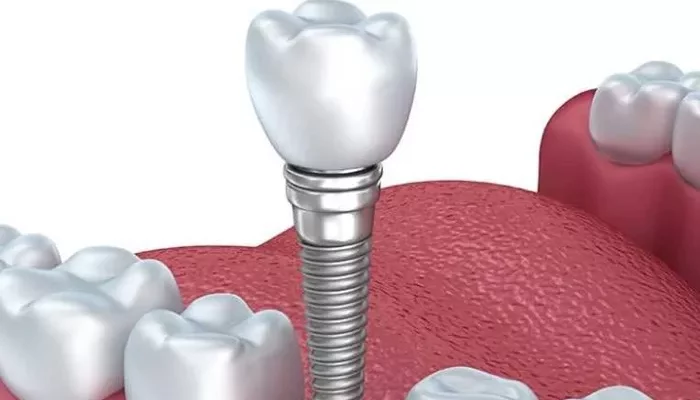Dental implants have become a popular option in modern dentistry for replacing missing teeth. They are artificial tooth roots, usually made of titanium, that are surgically placed into the jawbone to support replacement teeth. Understanding the advantages and disadvantages of dental implants is crucial for patients considering this form of tooth replacement.
Advantages of Dental Implants
Natural Appearance and Function
Dental implants closely mimic natural teeth in both appearance and function. The crowns that are placed on top of the implants are custom – made to match the shape, size, and color of the patient’s existing teeth. This results in a very natural – looking smile. For example, when a patient has a single missing tooth replaced with an implant, it is often difficult for others to tell which tooth is the implant.
Functionally, implants allow for normal biting and chewing forces. Unlike dentures, which may shift or move while eating, implants are firmly anchored in the jawbone. This means that patients can eat a wide variety of foods, including hard and crunchy foods like apples and nuts, without worry. The ability to chew properly also helps in maintaining good oral and overall health as it aids in proper digestion.
Long – Term Durability
Dental implants are designed to be a long – term solution for missing teeth. With proper care, they can last a lifetime. The titanium used in implants has the unique property of osseointegration, which means that it fuses with the jawbone over time. This creates a very stable base for the replacement tooth. For instance, studies have shown that the success rate of dental implants over a 10 – year period can be as high as 90 – 95% in healthy patients. This long – term durability makes them a cost – effective option in the long run, as patients do not need to keep replacing their tooth replacements like they might with dentures or bridges.
Preservation of Jawbone Structure
When a tooth is missing, the jawbone in that area begins to atrophy (shrink) over time. Dental implants help prevent this bone loss. As the implant fuses with the jawbone, it stimulates the bone, keeping it healthy and maintaining its volume. This is important not only for the aesthetics of the face but also for future dental procedures. For example, if a patient decides to get additional implants in the future, having a healthy jawbone structure makes the procedure easier and more successful.
Improved Oral Health
Implants do not require the alteration of adjacent teeth, as is the case with dental bridges. With bridges, the adjacent teeth need to be ground down to support the bridge. This can potentially damage those healthy teeth. Dental implants, on the other hand, are independent units that do not affect the neighboring teeth. This helps in maintaining the integrity of the remaining natural teeth, reducing the risk of cavities, gum disease, and other dental problems in those teeth.
Disadvantages of Dental Implants
Cost
One of the main disadvantages of dental implants is the cost. The procedure is generally more expensive than other tooth replacement options such as dentures or bridges. The cost includes not only the implant itself but also the surgical procedure, the abutment (the part that connects the implant to the crown), and the crown. In addition, there may be additional costs for preoperative evaluations, such as X – rays and CT scans, and postoperative follow – up appointments. For example, a single – tooth implant can cost anywhere from $1,000 to $3,000 or more, depending on various factors such as the location, the dentist’s expertise, and the type of materials used. This high cost can be a barrier for many patients who may not be able to afford it without some form of financial assistance.
Surgical Procedure and Recovery
Dental implant placement is a surgical procedure, which comes with its own risks. There is a risk of infection, bleeding, and damage to surrounding nerves or blood vessels during the surgery. For example, if the implant is placed too close to a nerve, it can cause nerve damage, resulting in numbness or tingling in the lip, tongue, or chin area. The recovery process can also be relatively long. After the surgery, patients may experience pain, swelling, and bruising for several days. They may also need to follow a soft – diet for a period of time and take medications to manage pain and prevent infection. It can take several months for the implant to fully integrate with the jawbone, during which time the patient needs to be careful with their oral activities.
Limited Candidates
Not all patients are suitable candidates for dental implants. Patients with certain medical conditions such as uncontrolled diabetes, severe osteoporosis, or blood – clotting disorders may not be good candidates. This is because these conditions can affect the healing process and the success of the implant. For example, in patients with diabetes, high blood sugar levels can slow down the healing of the surgical site, increasing the risk of infection and implant failure. Also, patients with insufficient jawbone density may need additional bone – grafting procedures before they can get implants, which further adds to the cost and complexity of the treatment.
Conclusion
In conclusion, dental implants offer many advantages such as a natural appearance and function, long – term durability, preservation of jawbone structure, and improved oral health. However, they also have some disadvantages, including high cost, the need for a surgical procedure with a relatively long recovery, and limited candidacy. Patients considering dental implants should weigh these factors carefully and consult with a dentist to determine if implants are the right option for them.
Related topics:

